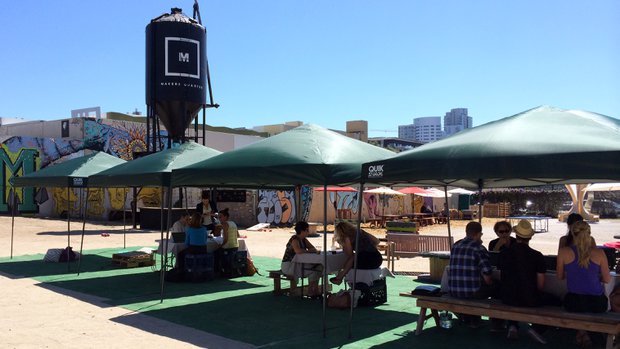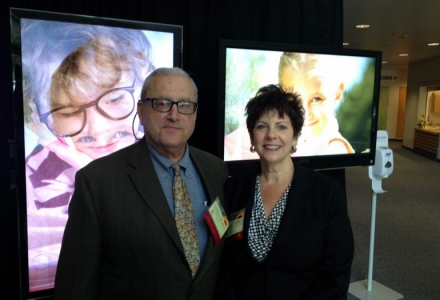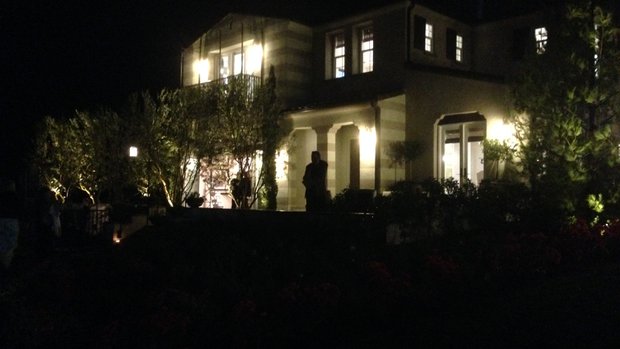New developments don’t exist in isolation — they can have a big impact on a neighborhood. That’s why the Citizens’ Stadium Advisory Group decided early on to take a holistic approach once we selected Mission Valley as the preferred site for a new Chargers stadium.
Less than three months ago, Mayor Kevin Faulconer asked us to do two things:
- Select the most viable site from two potential sites for a new multi-use stadium. We chose the current Mission Valley location for a number of reasons, including development expediency and cost.
- Develop a financing plan to pay for it.
With the site selection behind us, we’re focused on vetting the different financing tools and potential pools of money we can draw upon. Our goal is to finalize the financing plan and send it to Faulconer for his review by the end of May.
A few of us are also looking at the overall development of Mission Valley. It’s important for us to consider what’s next for this growing community of 22,000 residents, and how best to accommodate growth that is coming to Mission Valley with or without a new stadium.
WATCH: San Diego Explained: Take a Tour of Mission Valley’s Big Plans
Meanwhile, San Diego is working against the clock to hang onto its football team. The Chargers are competing with other NFL teams for a stadium in Los Angeles, and the team has made a series of moves to try to win that contest.
In order to present the mayor with a fair and workable plan that serves as a starting point for negotiations between him and Chargers owner Dean Spanos, I suggested we take a step back and look beyond the 166-acre site in Mission Valley to explore how other opportunities and constraints could affect the stadium.
We assembled a team of top designers and land use professionals from Urban Land Institute San Diego-Tijuana and the San Diego Chapter of the American Institute of Architects to help us look deeper into the ramifications of a new Chargers stadium. San Diego River Park Foundation experts and a representative from the Mission Valley Planning Group were also on this team.
Creating a new, mixed-use, transit-oriented village will more than likely be one funding source in the advisory group’s financing plan. We’re looking at what would be an appropriate scale for this village, and projecting its impact on the Mission Valley community.
Meanwhile, the site would need major improvements to boost game day mobility. One thing to consider would be expanding the existing east-west trolley line, along with constructing a state-of-the-art transit hub near the interstate. It would connect to a new trolley line, the Purple Line, which would run north and south along I-15.
As we start to address these mobility issues, an early step should be updating Mission Valley’s community plan. And to finance infrastructure improvements, we could take advantage of a new state program called Enhanced Infrastructure Financing Districts, which uses property tax increment to finance and construct or rehab a wide variety of public infrastructure and private facilities. Mission Valley might also explore a shuttle to connect residential areas to existing transit stations.
Building the San Diego River Park along the southern edge of the site would create a new regional asset and bring the river back to life, offering several dozen acres of open space and parkland. Bike and pedestrian paths would run along the river and link to greater Mission Valley.
With all this in mind, it’s important we make sure San Diegans are able to take advantage of the amenities year-round. A carefully planned mixed-use village could bring restaurants, shops, museums, an interpretive center for local history and outdoor sports activities that would benefit everybody throughout the year.
In order to keep the stadium site alive outside of Chargers game days, decision-makers need to retain a proven event management company to book year-round activities like concerts, special events and conferences. The design of the stadium needs to be flexible to accommodate expanded seating for Super Bowls and smaller events that won’t require use of the entire stadium.
Creating a new and smaller sports stadium with a mixed-use, transit-oriented center, rich with amenities and a regional park would enhance the business model for the Chargers like no other option the team is exploring. Further, it would boost our civic pride, through the creation of an iconic regional park with year-round activities for all to enjoy.
We’ll continue to work on behalf of all the stakeholders using holistic planning to find the nexus where the Chargers, Mission Valley, San Diego County and all the citizens who live here win.
Mary Lydon is executive director of Urban Land Institute San Diego-Tijuana.




 Here she’s at the conference with New School of Architecture+Design’s Mike Stepner. She’s been at ULI seven years, though a recent major accomplishment stands out: San Diego hosted the annual ULI Global Spring Meeting, which boasted the highest attendance (about 3,700) for a ULI Spring Meeting ever. This year’s goals include working with ULI district councils in the Southwest, including Mexico, to create a global net zero energy use conference.
Here she’s at the conference with New School of Architecture+Design’s Mike Stepner. She’s been at ULI seven years, though a recent major accomplishment stands out: San Diego hosted the annual ULI Global Spring Meeting, which boasted the highest attendance (about 3,700) for a ULI Spring Meeting ever. This year’s goals include working with ULI district councils in the Southwest, including Mexico, to create a global net zero energy use conference. Mary, here chatting with ULI colleague Fiona Lyons, was born and raised in LaCrosse, Wis. and originally eyed a career in preventative health. Back then, however, there weren’t many jobs in that field, and she found the land-use arena. How do we know she’s usually ahead of the trends? In the late ’80s, she owned a cafe in Hillcrest, which had a Ranchillio Espresso machine—one of about five in all of San Diego, she says. It was pre-Starbucks, and San Diegans were “just waking up to their taste buds for cappuccinos and Viennese coffee.” In her free time, she loves to travel, overdosing on mango and coffee on her most recent trip to Kauai. Her most exotic destination, though, was to Muscat, Oman, where she spoke at an Aspen Institute conference.
Mary, here chatting with ULI colleague Fiona Lyons, was born and raised in LaCrosse, Wis. and originally eyed a career in preventative health. Back then, however, there weren’t many jobs in that field, and she found the land-use arena. How do we know she’s usually ahead of the trends? In the late ’80s, she owned a cafe in Hillcrest, which had a Ranchillio Espresso machine—one of about five in all of San Diego, she says. It was pre-Starbucks, and San Diegans were “just waking up to their taste buds for cappuccinos and Viennese coffee.” In her free time, she loves to travel, overdosing on mango and coffee on her most recent trip to Kauai. Her most exotic destination, though, was to Muscat, Oman, where she spoke at an Aspen Institute conference.
 “From a residential side, it’s very solid — prices are up — but now we have a concern, after a year of affordability,” he said. “We can’t win for losing and we can’t lose for winning.”
“From a residential side, it’s very solid — prices are up — but now we have a concern, after a year of affordability,” he said. “We can’t win for losing and we can’t lose for winning.”